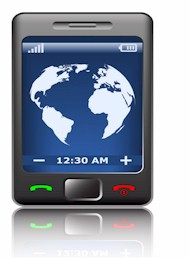|
|


Emergency XML Messaging
 This section of our technical library presents articles written about Emergency Alert Systems and Disaster Recovery definitions, terms and related information.
This section of our technical library presents articles written about Emergency Alert Systems and Disaster Recovery definitions, terms and related information.
The 911Broadcast emergency notification and alert service can deliver a large number of phone calls using a network of phone systems employing digital phone lines simultaneously. Should a disaster such as a snow storm, wild fire or flood hit your area, 911Broadcast systems can alert your community quickly providing specific instructions if an evacuation is required.
This service is available using our emergency broadcasting systems. If a dangerous chemical spill occurs in your community, you can target specific areas to call. If a severe snow storm hits your area, your community can be notified of school closings or event cancellations.
Emergency XML
The following is an extract from the article "Emergency XML - Starting a healthy dialogue" BY Ron Miller.
"Long before the Sept. 11, 2001, terrorist attacks, the Centers for Disease Control and Prevention recognized the need for a single, integrated disease reporting system — for naturally occurring outbreaks or bioterrorism incidents.
Bringing together health data nationwide required a common data transmission system that would allow the different entities to share data from a variety of databases and computer systems. That system required a common language, and CDC officials determined early on that Extensible Markup Language provided the best avenue to achieve smooth data exchange.
Using XML, CDC's integrated system — known as the National Electronic Disease Surveillance System (NEDSS) — will provide a way for states to enter and transmit disease data to the federal agency using industry-standard technologies.
"It is a major collaborative initiative involving public and private partners intended to streamline movement of public health data by taking advantage of advances in information technology," said Daniel Pollock, a medical epidemiologist at CDC.
Efforts thus far on NEDSS illustrate the critical groundwork required to adapt the malleable XML for a specific project.
XML consists of a set of user-defined tags that provides a common definition of data elements in order to facilitate data exchange across heterogeneous computer systems. Unlike HTML, which uses static tags to describe how information should be presented on a Web page, such as in bold or in a chart, XML is used to describe data types and how computers can process them.
"Being able to define custom tags within the XML document, which is obviously in contrast to HTML static tags, is a key element of this technology," said Jim Kauflin, NEDSS technical architect with Computer Sciences Corp., a consulting firm working closely with CDC on the project.
For disparate computer systems to communicate data to one another, they need a common set of XML tags. "XML is just a tool, and what we need to do to make that tool work for NEDSS, or any other interoperability project, is to agree on a standard set of tags so that the [system] is truly interoperable between organizations," said Dr. John Halamka, chief information officer at Boston-based CareGroup Healthcare Systems.
Once parties agree on a set of tags, XML provides a way to take advantage of a group of other standards collectively called Web services. NEDSS participants will be able to use Web services to build systems that can exchange data over the Internet very efficiently. "The real win of XML is fast interoperability using standards that can be done quickly and at low cost," Halamka said.
With NEDSS, the parties — in this case, 50 states, seven municipalities and CDC — needed not only to come to an agreement around a common set of data tags, but also to develop a way to allow each computer within the system to understand and interpret those tags. Enter the XML schema, a document that defines the set of tags and checks to be sure they were applied correctly in a process known as validation.
"The XML schema expresses the shared vocabulary that allows the machine to carry out rules made by people," CSC's Kauflin said. "So, we can use the schema to define the structure, content and semantics within an XML document."
What's more, the project required a standard format to help define its data. In this case, project leaders chose the Health Level 7 (HL7) standard, which has been used in the medical industry for many years to allow systems within the same medical organization to communicate with one another.
Basically, HL7 defines the semantics of the message being communicated, said Mead Walker, an independent consultant working with CDC on the implementation of HL7 for NEDSS. In this case, the semantics provide a way to express various types of health care-related data. XML provides the syntax for the message, or the format for how the information will be organized.
In the upcoming release of HL7, Version 3, project leaders are moving to expand the format to allow the transfer of information, not only among different systems within the same institution, but across systems in a variety of locations (a NEDSS requirement).
"The tie-in with HL7 is that HL7, Version 3, is being designed with the intention that it would work well with an XML communication," Walker said....."
To view the entire article, please contact Ron Miller at www.fcw.com.
Emergency XML Messaging Systems and Services
 Automatically send phone messages from your computer system using our XML push software.
Let our phone system automatically access information from your computer systems and web servers using our XML Pull and web information retrieval logic.
Alerts can be automatically broadcast to systems administrators or to an entire department based upon an external event such as a power failure or system failure.
Other applications may be as simple as wakeup calls or weather alerts that are triggered automatically from your own computer systems or websites.
Automatically send phone messages from your computer system using our XML push software.
Let our phone system automatically access information from your computer systems and web servers using our XML Pull and web information retrieval logic.
Alerts can be automatically broadcast to systems administrators or to an entire department based upon an external event such as a power failure or system failure.
Other applications may be as simple as wakeup calls or weather alerts that are triggered automatically from your own computer systems or websites.
Using standard XML protocol, develop applications that transmit messages to our phone systems to perform the required phone messaging tasks. This could including simply sending a single message to one phone number, several phone numbers, or to an entire list of numbers.
The message can be sent in the form of a wav file or a text file that is automatically converted using our text to speech software. Several voice wav files can be designated in the XML push message, giving you maximum flexibility.
Contact DSC Today for a FREE analysis and quote and to learn more about our emergency notification systems and services.
|




 This section of our technical library presents articles written about Emergency Alert Systems and Disaster Recovery definitions, terms and related information.
This section of our technical library presents articles written about Emergency Alert Systems and Disaster Recovery definitions, terms and related information.
 Automatically send phone messages from your computer system using our XML push software.
Let our phone system automatically access information from your computer systems and web servers using our XML Pull and web information retrieval logic.
Alerts can be automatically broadcast to systems administrators or to an entire department based upon an external event such as a power failure or system failure.
Other applications may be as simple as wakeup calls or weather alerts that are triggered automatically from your own computer systems or websites.
Automatically send phone messages from your computer system using our XML push software.
Let our phone system automatically access information from your computer systems and web servers using our XML Pull and web information retrieval logic.
Alerts can be automatically broadcast to systems administrators or to an entire department based upon an external event such as a power failure or system failure.
Other applications may be as simple as wakeup calls or weather alerts that are triggered automatically from your own computer systems or websites.